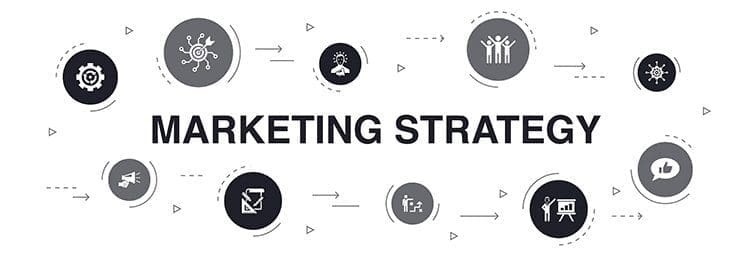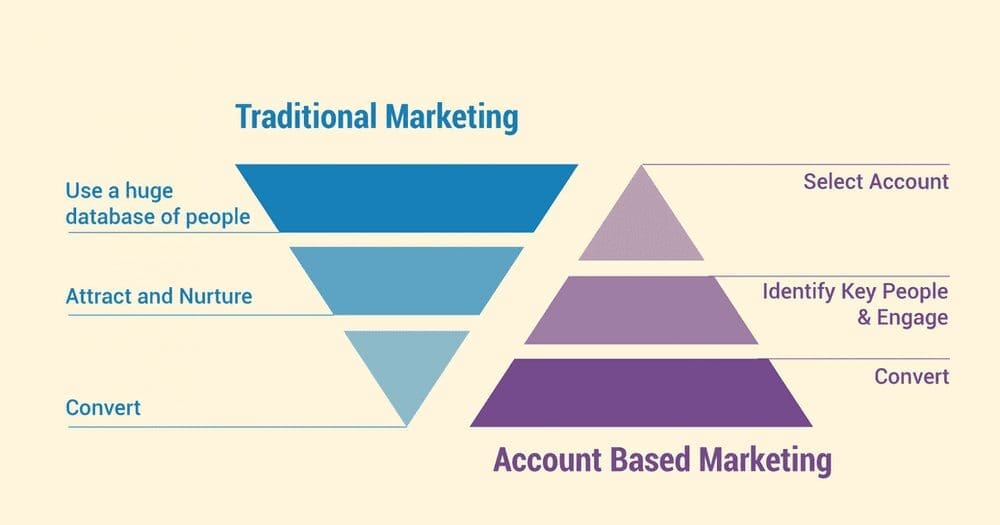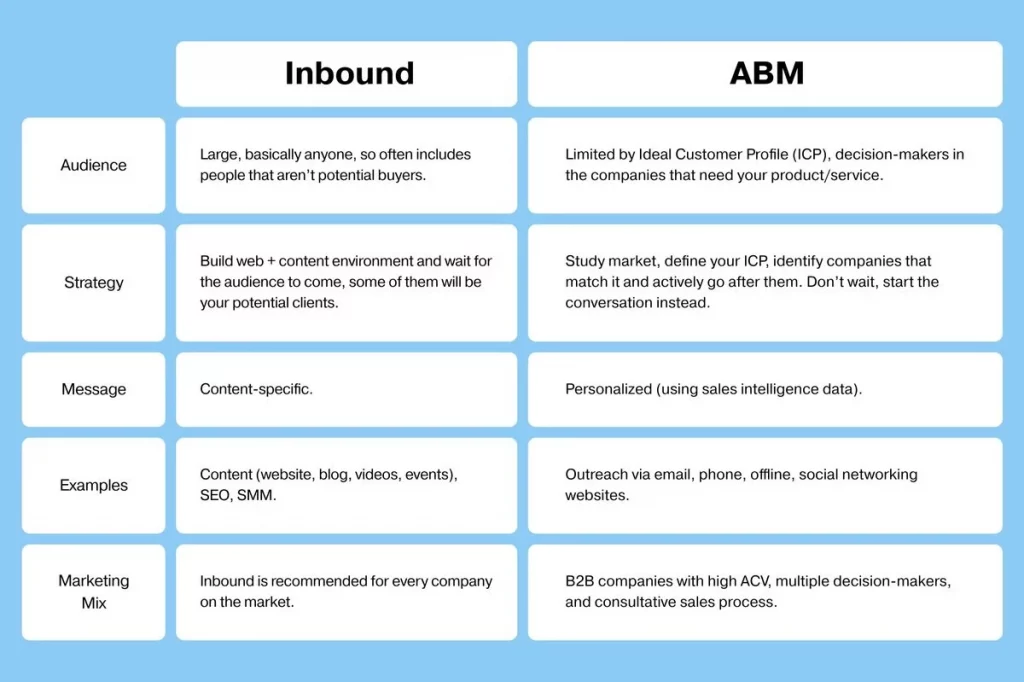Aligning Sales and Marketing
Discover the art of crafting enduring customer loyalty where every interaction blossoms into an engaging saga of shared success – join our conversation on transforming transactions into lasting connections.
Discover the art of crafting enduring customer loyalty where every interaction blossoms into an engaging saga of shared success – join our conversation on transforming transactions into lasting connections.
A dive into creating an effective B2B marketing strategy and trends to help reach potential customers and generate leads.
Are you looking to create or update your company’s B2B marketing strategy? Not sure where to start, or what the best practices are?
Content marketing is the strategic process of creating content that connects to and engages your target audience, ultimately encouraging them to take action. It can include blogs, social media posts, white papers, emails, videos, web content and more.
Marketing planning is the key for marketers to reduce stress, anxiety, and missed opportunities while remaining focused on your strategy.
If you’re responsible for marketing a business-to-business (B2B) product or service, it’s likely that your marketing strategy is focused on generating leads. A strategic marketing plan will help you focus your energy by setting goals and objectives, identifying the target market, defining the customer experience, and building out an effective lead generation process.
This blog post will cover the basics of developing a strategic marketing plan to help you engage prospects with targeted messages that are delivered at just the right time.

Your Planning Process should include the following:
Once you have a marketing strategy in place, it’s important to track progress and make changes as needed. Use these marketing planning tips to get started on creating an effective plan for your B2B business.

As you develop your strategic marketing plan, always remember to keep it simple. Don’t overthink things and spend too much time on creating a document that is 100 pages long. This could cause lack of engagement with the target market because they don’t have time or patience for such detailed information.
Now you’re thinking “how the heck am I going to get all this done?” It’s not easy but creating a solid foundation will help you stay on strategy as well as keep your marketing communications messages laser focused.
Keep things clear and to the point. This document can then be the foundation that your marketing efforts are built upon.
The marketing industry is always evolving. The marketing world has seen the rise and fall of many marketing tactics over the years, but one marketing tactic that can’t be denied is account based marketing (#ABM). Account Based Marketing started with a focus on targeting accounts to gain new business. However, as ABM continues to evolve, it’s become more sophisticated than ever before. As marketers rely less on old-school sales methods like cold calls and start using tools like social media advertising to identify their target audience, they can pinpoint which people will benefit most from their products or services by listening in on conversations about relevant key words. With this knowledge at hand, marketers can craft messages that speak directly to these potential customers.

Thanks to the continued growth of account based marketing, businesses now have a better way to differentiate themselves from their competitors. Rather than targeting a wide audience with a one-size-fits-all message, ABM allows businesses to target specific accounts that are likely to be interested in what they have to offer. This level of personalization has never been easier, and marketing teams can now access tools that help them find the right accounts for their products.
There are 5 steps to keep in mind when initiating an account-based marketing strategy:

ABM has helped businesses gain new business by focusing on target accounts, and it can do the same for you. By following these simple steps, you can create an ABM strategy that will help your business stand out from the competition. So, what are you waiting for?
With the help of account-based marketing, businesses can focus on quality over quantity, and they’re able to see a real return on their investment. As more and more businesses adopt ABM as their primary marketing tactic, it’s clear that this approach is here to stay. Thanks for reading and get started on your ABM strategy today!
Details. Deadlines. Multi-disciplined teams. Clients. Suppliers. Multiple projects.
The life of any marketer.
On top of that, technology, social media, marketing tactics – our world is constantly changing. That means that us marketing professionals need to be always on top of our game. It’s not enough to just know the basics; marketing has evolved into a field where you must stay up to date with changes in technology, consumer behaviors, and marketing trends.
So how do you stay organized and on top of everything? I recently had a conversation with a colleague as they wanted to know my “system” of doing things. First off, if it’s in the computer (and phone), I don’t have to remember anything. Let technology work for you.
During our conversation a couple basic things came up
My approach to projects
As a marketer of 20+ years, always be proactive. Get things started by taking the initiative. Come to your teammates or leadership with solutions and ideas.
The marketing world is constantly changing, and it can be hard to stay on top of everything. The more organized you are, the better chance you have at staying ahead in a fast-paced industry that’s always evolving.
As a recap:
I hope these tips are helpful and let me know if you have any questions on how I go about things.
Just a quick outline of some key elements
Be proactive as opposed to reactive… get things done and show concepts, drafts and bring ideas.
Metrics… tie everything to something you can measure. Did it work and to what degree? Start looking at sales data overlayed with what marketing is doing and look for trends and correlations.
Public Relations is a very important part of any marketing campaign. It’s the way you get your message out to the public, and it can be used for all sorts of purposes. In this section, we will cover how public relations strategies work and what they can do for you. We will also talk about some of the most common PR strategies that are used in modern day marketing campaigns.
Public relations strategies are used to spread information about products, services, or business in general. These public relations strategies can be very effective if they are carefully planned out and executed correctly. When creating a public relations strategy, you need to consider all the possible outcomes of your actions while considering who your target audience is. You also need to determine who will be responsible for putting the PR campaign into action, how it will be executed and what the overall goal of it is. Dedicating individuals as media contacts and for staff to direct all media requests to those individuals. By streamlining requests and activities it will ensure a consistent message that is part of the overall strategy.
The success of any PR campaign depends on determining exactly what these things are ahead of time. This ensures that everything goes smoothly during the execution phase which greatly increases the chances for success.
There are many different types of public relations strategies that can help you increase interest in your company. One of the most popular is the press release. Press releases are typically used to announce new products or new partnerships with other companies. Press releases are usually written in a way that grabs the reader’s attention and entices them to read it.
Here are some tips for writing a successful press release:
In addition to distributing and editorial pitching on news releases, there are many other aspects of public relations.
The most important thing to remember is that anything you do in public relations should be done with the goal of building awareness, generating interest, and increasing sales. It’s not just about getting press coverage; it’s about paving the way for growth.
Many businesses also use social media as a platform for public relations strategies. When used correctly social media can have benefits such as brand awareness, increased visibility of your products, customer engagement etc… Here are some tips on how to successfully incorporate social media into your public relations strategy
The way marketers get information out is changing rapidly due to technology advancements, especially when it comes to marketing in media channels. These changes are creating new opportunities in markets that weren’t previously possible. According to a recent study by the World Federation of Advertisers, marketers will invest more in online advertising than TV advertising in 2017. This trend reflects how advancements in digital technology are allowing companies take the lead in fast paced marketing channels.
A lot of the new opportunities stem from the rise of programmatic technology. Programmatic advertising has allowed marketers to eliminate many of the middlemen in their companies and purchase ad space in real time at scale. This technology is already being used by prominent brands like Unilever, which spent over half a billion dollars on programmatic advertising in 2015.
Another recent trend that shows no signs of slowing down is the increase in content marketing. According to Content Marketing Institute, 85% of organizations are using some form of content marketing with 86% planning to use more this year. Additionally, consumers are spending an average of 3 hours per day consuming digital media. This means that there is a massive opportunity for companies to provide quality information through various outlets like blogs, social media, and online videos.
Lastly, the continuing growth of mobile technology means that marketers will continue to invest in mobile advertising. Mobile advertising is expected to reach $189 billion by 2020 with programmatic ads reaching $59 billion. This trend has allowed companies like Meta and Alphabet (to grow at an exponential rate due to their adherence of focusing on new product development.
Companies must adapt quickly to the changes occurring in the media landscape or risk becoming obsolete. However, it’s important not be overwhelmed when introduced to these new technologies as they can have a steep learning curve. This means being aware of what your company needs to do to stay competitive in your field. For example, if you’re not selling a product that most people purchase online then you should be focusing on marketing tactics that require less technological understanding.
As more companies are realizing the benefits of incorporating social media into their PR strategies, it’s important to stay on top of new marketing trends. It can be easy for marketers to get lost in all the new developments and forget how they should adapt quickly or risk becoming obsolete.
For every marketer, it’s important to research market trends and marketing strategies. Check out these 5 tips to get started.